Here are your stories for today...
Be safe out there!
Tom
Four members of NC family killed in plane crash near Sanford. What we know
By Richard Stradling
Four members of a family were killed when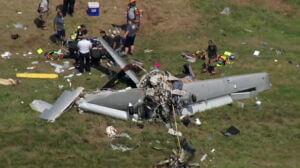 their small plane crashed in Lee County north of Sanford on Monday afternoon.
their small plane crashed in Lee County north of Sanford on Monday afternoon.
Travis and Candace Buchanan of Lee County and their children, Aubrey and Walker, died when their single-engine plane crashed in a field south of Riddle Road at about 2 p.m., according to the State Highway Patrol. Travis and Candace Buchanan were both 35, while Aubrey was 10 and Walker was 9.
The family owned Buchanan Farms, where they grew strawberries, squash, cucumbers and other vegetables and held festivals, car shows and other community events.
The plane is a Cirrus SR22T, according to the National Transportation Safety Board, which is investigating what caused the crash. It was registered to Travis Buchanan, according to the Federal Aviation Administration.
The cause of the crash was not immediately apparent. The FAA said Tuesday that the “aircraft crashed under unknown circumstances.”
The family took off from Merritt Island, Florida, on the coast east of Orlando, shortly after 11 a.m. Monday. The plane was approaching Raleigh Executive Jetport in Lee County when it crashed, according to the flight tracking website FlightaAware.com.
Three members of the family died at the site of the crash, according to the highway patrol. The fourth was taken by Carolina Air Care helicopter to UNC Hospitals in Chapel Hill and later died there.
The plane went down in a remote field north of U.S. 421 and east of U.S. 1. Aerial images taken by The News & Observer’s newsgathering partner ABC11 showed the plane’s passenger compartment badly crumpled.
Man ‘sucked into plane engine and killed’ on airport runway as jet prepares to take off in tarmac horror in Milan
A man has reportedly been sucked into a plane engine and killed on an airport runway.
Juliana Cruz Lima – The Sun
A man has reportedly been sucked into a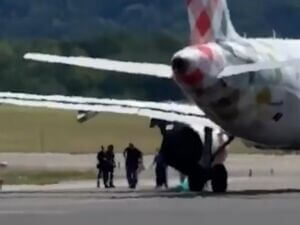 plane engine and killed on an airport runway in Milan.
plane engine and killed on an airport runway in Milan.
Operations at the busy Orio al Serio Airport, popularly known as Milano Bergamo, came to a halt at 10.20am after a “fatal accident” on the tarmac.
According to Corriere della Sera, the victim was not a passenger or airport staff member.
The person is believed to have run onto the tarmac and into the path of an Airbus A319 Volotea aircraft bound to Asturias, Spain, as it was taxing for takeoff.
Airport sources told the outlet that the person was pulled into the aircraft engine in a horrifying moment just as the plane was preparing to depart.
Small plane crashes into Priest Lake near Cavanaugh Bay airport
Oliver Waite NonStop Local Digital Producer
PRIEST LAKE, Idaho – A small propeller plane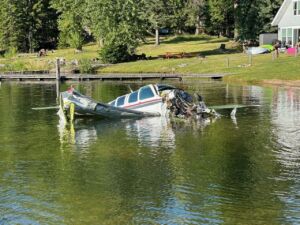 crashed into Priest Lake on Monday evening near the Cavanaugh Bay airport, according to witnesses at the scene.
crashed into Priest Lake on Monday evening near the Cavanaugh Bay airport, according to witnesses at the scene.
Emergency responders quickly arrived at the site following the crash.
Authorities have not yet provided details about those involved or the cause of the crash.
https://www.khq.com/news/small-plane-crashes-into-priest-lake-near-cavanaugh-bay-airport/article_d82275e3-fec4-46ad-9025-cc899500fb26.html
Smoke in the cabin - Airplane makes unscheduled landing in Friedrichshafen
jbr/dpa/lsw
A plane is en route to Zurich. Suddenly,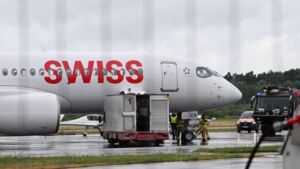 smoke is reportedly heard in the cabin – the plane is landing earlier than scheduled.
smoke is reportedly heard in the cabin – the plane is landing earlier than scheduled.
Due to possible smoke in the cabin, a passenger plane made an unscheduled landing at Friedrichshafen Airport . According to the airline Swiss International, 115 passengers and five crew members were on board. According to police, no one was injured. One passenger suffered a panic attack and was treated as an outpatient.
The plane was en route from Belgrade to Zurich that morning. According to the airline, there were error messages in the cockpit of the Airbus A220-300. There was also slightly visible smoke development in the rear of the cabin. The exact cause of the message on board and whether smoke was actually present will require further investigation, police said.
Landing in Friedrichshafen without incident
The airline announced that the crew had decided, as is customary in such cases, to fly to the nearest suitable airport. The landing in Friedrichshafen on Lake Constance was uneventful, and the pilots taxied the aircraft to a parking position. The passengers were able to disembark the Airbus via the regular stairs and were cared for on the ground by emergency personnel. Police described the incident as a so-called emergency landing.
The airport was already prepared for an emergency landing at the time of landing. Numerous firefighters, rescue services, and police were on standby in case of an emergency. The passengers were later transported by bus to their originally planned destination airport.
https://www.stuttgarter-nachrichten.de/inhalt.rauch-in-der-kabine-flugzeug-landet-ausserplanmaessig-in-friedrichshafen.657c9b7f-5ed8-4d7d-bac0-e205e041ebd4.html
Fort Lauderdale Bound Delta Flight Boeing 757 from Atlanta with One Hundred and Eighty Five Passengers Makes Emergency Landing in Fort Myers (RSW) After Midair Battery Fire, What You Need To Know
By TTW
One Hundred and Eighty Five Passengers on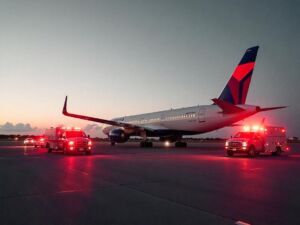 a routine morning flight from Atlanta to Fort Lauderdale found themselves in an unexpected crisis when a Delta Air Lines Boeing 757 was forced to make an emergency landing in Fort Myers. The drama unfolded midair on July 7, 2025, after a passenger’s portable battery pack caught fire, sending smoke into the cabin and triggering swift action from the crew.
a routine morning flight from Atlanta to Fort Lauderdale found themselves in an unexpected crisis when a Delta Air Lines Boeing 757 was forced to make an emergency landing in Fort Myers. The drama unfolded midair on July 7, 2025, after a passenger’s portable battery pack caught fire, sending smoke into the cabin and triggering swift action from the crew.
Flight 1334, which had set out for the sunny shores of Fort Lauderdale, was suddenly rerouted to Southwest Florida International Airport (RSW), roughly two hours away by road. Thanks to the quick response of flight attendants and the cockpit crew, the fire was contained, and all One Hundred and Eighty Five passengers and six crew members landed safely. This incident not only highlights the critical importance of safety training but also underscores growing concerns in aviation over the risks posed by lithium batteries carried by travelers every day.
A Routine Flight Turns into an Emergency
Delta Flight 1334 began its day as a standard domestic hop from Atlanta (ATL) to Fort Lauderdale (FLL). But around cruising altitude, the calm skies took a dramatic turn when a passenger’s portable battery device ignited.
Smoke began to fill parts of the cabin. Flight attendants, trained for such emergencies, rushed into action. They deployed onboard extinguishers, swiftly containing the flames.
Still, the danger was far from over. Residual smoke hung in the cabin, prompting pilots to declare an emergency and reroute the aircraft to Southwest Florida International Airport (RSW) in Fort Myers—a two-hour drive from the original destination.
Safe Landing in Fort Myers
Despite the midair scare, the Boeing 757-200, operating as Delta Flight 1334, landed safely in Fort Myers at 8:48 a.m. local time.
Onboard were 185 passengers and six crew members. No injuries were reported, a testament to the crew’s rapid response and emergency preparedness.
Delta confirmed that the aircraft involved was registered as N659DL, a 35.1-year-old jet, making it one of the oldest aircraft in the airline’s current fleet. While the plane’s age isn’t necessarily tied to the fire, it’s a reminder of the complex mix of equipment and passenger technology that airlines manage every day.
FAA Launches Investigation
The U.S. Federal Aviation Administration (FAA) has opened an investigation into the incident. The agency routinely examines any onboard fires, especially those involving lithium batteries, which have proven a persistent safety concern across the aviation industry.
FAA data shows a troubling trend. Between 2015 and 2024, lithium battery-related fires on U.S. flights surged by 388%. In 2025 alone, there have already been 34 reported cases, with 11 directly linked to portable battery packs like the one involved on Delta Flight 1334.
This latest emergency underscores how quickly a single personal device can trigger significant operational disruption and pose a threat to passenger safety.
The Lithium Battery Problem in Aviation
Lithium-ion batteries are everywhere—in phones, laptops, tablets, and portable chargers. But their high energy density makes them prone to thermal runaway if damaged, defective, or exposed to heat. This rapid chemical reaction can cause fires, smoke, and even explosions, particularly in enclosed spaces like an aircraft cabin.
The aviation industry has grappled with these risks for years. Airlines have issued repeated warnings for passengers not to pack spare batteries in checked luggage. However, incidents continue to occur in carry-on bags and even during device use in-flight.
Delta’s swift containment of the fire prevented a far worse outcome. Yet every new incident pushes the industry to review policies and training for dealing with onboard fires.
Airlines Respond with Stricter Rules
In response to the growing battery threat, airlines worldwide are tightening policies.
Southwest Airlines implemented a first-of-its-kind rule in May requiring passengers to keep all portable chargers visible during the flight. Crew members can inspect devices for overheating or damage, reducing the chance of unnoticed fires.
Singapore Airlines has taken an even stricter stance, banning the use and charging of power banks entirely during flights. Such policies highlight how seriously airlines view the risks posed by lithium batteries—even as passengers rely more than ever on personal electronics during travel.
Operational and Financial Impact
While Delta managed to avoid injuries and a catastrophic fire, the incident still carried significant operational and financial implications.
The diversion added delays for passengers bound for Fort Lauderdale, disrupted schedules for crew and ground teams, and required coordination for rebooking and onward travel. Emergency landings often result in extra costs related to inspections, aircraft downtime, and passenger compensation.
Moreover, incidents like this can erode customer confidence, especially among travelers who are already anxious about flying. For Delta and the broader industry, maintaining trust hinges on transparent communication and demonstrating a robust safety culture.
Safety Remains Top Priority
Delta has reiterated its commitment to safety, praising its cabin crew for following emergency protocols precisely as trained. Their rapid action in containing the fire and safeguarding passengers highlights the vital role of crew training in preventing midair emergencies from escalating.
Lithium battery incidents, however, remain a stubborn challenge for airlines. As passenger devices multiply in both size and number, airlines must continue adapting procedures, equipment, and crew training to minimize risks.
A Broader Industry Challenge
The Fort Myers diversion is not an isolated event. The surge in lithium battery fires over the past decade signals a broader, ongoing challenge for aviation regulators, manufacturers, and airlines alike.
The FAA continues to issue updated guidance for both carriers and passengers. Education campaigns stress the importance of proper battery handling, avoiding counterfeit devices, and promptly reporting any signs of overheating or smoke.
Travelers are encouraged to keep batteries accessible, follow airline instructions, and remain vigilant during flights. These small steps can make the difference between a contained incident and a full-scale emergency.
Looking Ahead
As Delta Flight 1334’s passengers finally reached their intended destinations, the aviation world was left once again confronting the delicate balance between modern technology and traditional safety protocols.
In an era when travelers are more connected than ever, the threat posed by lithium batteries will continue to demand attention, investment, and innovation. For airlines, it’s a stark reminder that safety remains the industry’s most critical priority—no matter how routine a flight might seem.
While the skies remain largely safe, every incident like Delta’s serves as both a warning and a call to action for an industry constantly in motion.
NTSB Final Report: Aviat A1
Airplane Bounced About 3 Ft Then Touched Back Down And Then, With No Brakes Applied, The Airplane Began Veering To The Left
Location: Rowlesburg, West Virginia Accident Number: ERA25LA015
Date & Time: October 11, 2024, 18:40 Local Registration: N79HY
Aircraft: Aviat A1 Aircraft Damage: Substantial
Defining Event: Loss of control on ground Injuries: 1 None
Flight Conducted Under: Part 91: General aviation - Personal
Analysis: The pilot entered the airport traffic pattern on the downwind leg and turned onto the base and final legs for runway 31 with wind from 260° at 5 knots. A witness observed and the pilot reported a normal landing, with the airplane touching down an estimated 300 to 400 ft down the runway. The pilot stated that, during the landing roll, the airplane bounced about 3 ft then touched back down and then, with no brakes applied, the airplane began veering to the left. He attempted to correct with right rudder and right brake but the veer to the left continued and the airplane impacted trees on the left side of the runway. The pilot informed the Federal Aviation Administration (FAA) airworthiness inspector that he had not noticed any tendencies for the airplane to pull left during landings on previous flights.
Postaccident examination of the airplane by a FAA airworthiness inspector revealed substantial damage to the right wing. A check of the flight controls revealed they appeared to be intact and functioning properly. A check of the brakes was performed with no discrepancies noted. A detailed examination of the tail wheel assembly, which was installed in accordance
with a supplemental type certificate, revealed it was installed in accordance with the installation requirements, with proper left and right steering springs installed and tensioned. A discrepancy with the tailwheel leaf spring not being centered was noted, but the airplane manufacturer representative reported to the FAA inspector that condition would have negligible effect on taxi operations.
Probable Cause and Findings: The National Transportation Safety Board determines the probable cause(s) of this accident to be -- The pilot’s failure to maintain directional control during the landing roll, resulting in the onground collision with trees.
FMI: www.ntsb.gov
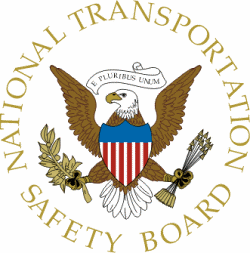
Today in History
22 Years ago today: On 8 July 2003 Sudan Airways flight 139, a Boeing 737-200, crashed while on approach to Khartoum-Civil Airport, Sudan, killing 116 occupants; 1 survived the accident.
| Date: | Tuesday 8 July 2003 |
| Time: | 04:17 |
| Type: | Boeing 737-2J8C |
| Owner/operator: | Sudan Airways |
| Registration: | ST-AFK |
| MSN: | 21169/429 |
| Year of manufacture: | 1975 |
| Engine model: | P&W JT8D-7 |
| Fatalities: | Fatalities: 116 / Occupants: 117 |
| Other fatalities: | 0 |
| Aircraft damage: | Destroyed, written off |
| Category: | Accident |
| Location: | 5 km E of Port Sudan - Sudan |
| Phase: | Approach |
| Nature: | Passenger - Scheduled |
| Departure airport: | Port Sudan Airport (PZU/HSSP) |
| Destination airport: | Khartoum-Civil Airport (KRT/HSSS) |
| Confidence Rating: | Information is only available from news, social media or unofficial sources |
Narrative:
Sudan Airways flight 139, a Boeing 737-200, crashed while on approach to Khartoum-Civil Airport, Sudan, killing 116 occupants; 1 survived the accident.
About 15 minutes after takeoff from Port Sudan, the pilot reported the loss of power in one engine. The flight returned to Port Sudan and was cleared for the ILS runway 35 approach. The reported visibility was 2.5 miles in sand. The flightcrew did not sight the runway, and during the missed approach the airplane descended and collided with wasteland about 3 miles east of the airport. The aircraft disintegrated during the impact sequence. The wreckage was strewn a distance of about 600 feet, and oriented on a 150 degree magnetic track.
A two-year old boy, Mohammed el-Fateh Osman, survived the accident. He was flown to the United Kingdom for medical treatment.
